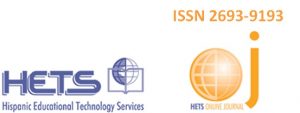Authors Volume XIV, Fall Issue
To read all articles, click on the following link to be redirected to the new dedicated platform:
- Preferred Class Modality from a Sample of Community College Students during COVID- 19 and after the End of the Declaration of the Federal COVID-19 Public Health Emergency
Authors:
- Elys Vásquez-Iscan Hostos Community College, City University of New York
- Monica Stanton Koko Borough of Manhattan Community College, City University of New York
- Teresa Gray Hostos Community College, City University of New York
- Ronette Shaw Hostos Community College, City University of New York
- Abstract
A student survey was conducted in the fall of 2021, during the COVID-19 pandemic, and summer and fall of 2023, after the end of the federal COVID-19 public health emergency (PHE) declaration. The results of this survey aim to increase an understanding of community college students’ preferences of class modality as they relate to the wider context of their lives. A total of 607 responses were collected on student’s preferred class modality. The findings demonstrate a preference for asynchronous courses during the COVID-19 pandemic. In comparison, the survey showed that after the end of the declaration of the federal COVID-19 public health emergency (PHE), there was a preference for synchronous courses instead of asynchronous.
2. COBIMET’S Distance Education Online Certification for Librarians: Participants Assessment and Satisfaction Survey Results
Author: Carlos Crespo COBIMET
Abstract
This viewpoint article presents the development and outcomes of a distance education certification offered in 2022 by the Consorcio de Bibliotecas Metropolitanas (COBIMET) for librarians in Puerto Rico. The program’s inception was driven by the need to equip librarians with the skills and knowledge required to effectively support learners and educators in the evolving landscape of online education, technology, and information access. The certification consisted of five modules covering topics such as Learning Through Distance Education, Information and Communication Technology and the Internet, Assessment and Evaluation, and Instructional Design. The findings from the online satisfaction survey indicate that the program has met high levels of participant satisfaction, particularly in terms of course design, content, assessment methods, and overall delivery. Twenty-two (22) out of the 27 participants completed the certification (81% retention rate). Pre-test results showed that only 40% of participants scored 80% or more correct answers at the beginning of the certification, while at the end of the certification, 100% of participants scored 80% or more.
Participants’ constructive feedback has provided insights for program enhancements and expansion to a broader group of library professionals.
3. Microaprendizaje: recorrido histórico del aprendizaje en fragmentos
Author: Elizabeth Díaz Rodríguez
Abstract
Microlearning has its roots in traditional educational practices. Historically, there have always been short courses or concentrated forms of study. A qualitative approach was used to study the history of microlearning by reviewing documents and references. The research ends by leaving open the continuity of the evolution of the concept.
4. La integración de la inteligencia artificial en la educación: Desafíos y oportunidades: Reflexión de una profesora
Author: Cinthia Rivera JiménezNUC University, División en Línea Recinto Bayamón, P.R.
Abstract
Technological advancements in education have reached a milestone with Artificial Intelligence (AI)-based response systems, especially OpenAI’s Generative Pre-trained Transformer (GPT). This tool has revolutionized how students get answers to their queries by harnessing online resources to provide instant information. Despite its potential for errors and occasional use of unverifiable information, what truly stands out is the astounding quality of the responses it offers. The article delves into the ethical challenges posed by this AI in education, particularly the growing concern for academic dishonesty. It further underscores the pressing need to educate students about academic integrity, providing recommendations for its use and exploring the role of the educator. Moreover, it explores the challenges and opportunities in integrating this technology in the context of virtual learning, in a world where this tool is accessible to everyone.
Trackback from your site.






